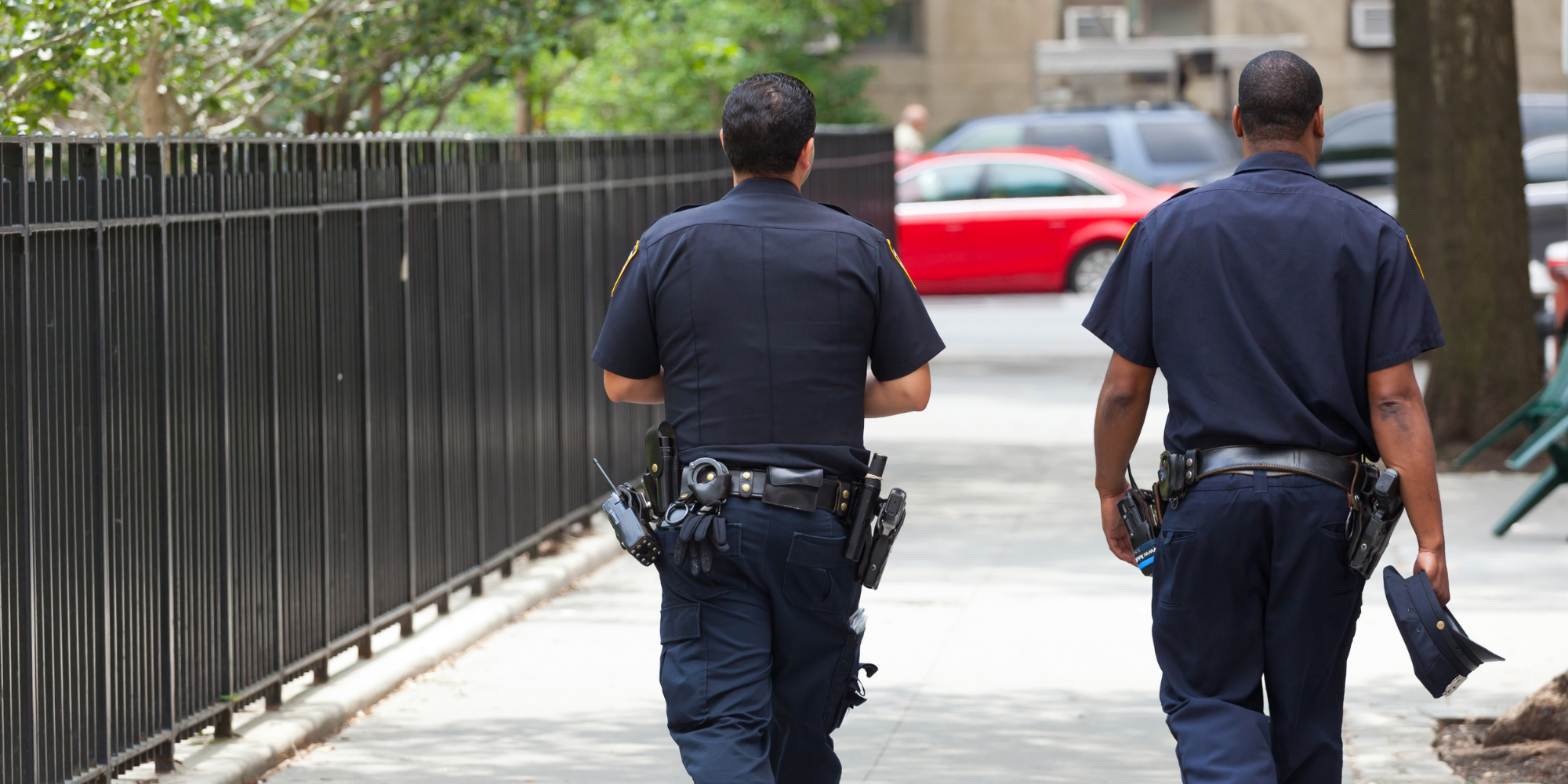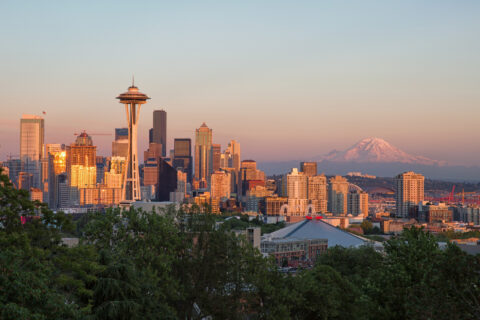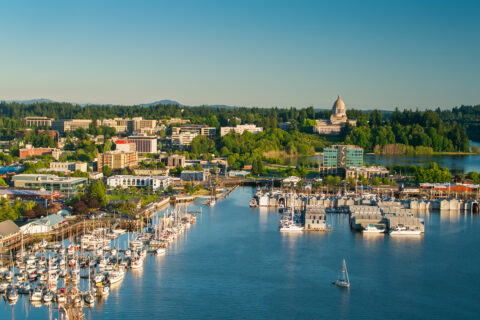In February of 2021, the National League of Cities (NLC) launched the Reimagining Public Safety Task Force made up of local leaders from across the country. The Task Force’s recommendations report, A Path Toward Safe and Equitable Cities, released in October, outlines five high-level recommendations for city leaders to help improve the ways in which they ensure the safety of all residents:
- Direct municipal government leadership toward providing safety and well-being for all.
- Balance the respective roles of government agencies, residents and partners.
- Significantly expand the use of civilian-led and community-based well-being and prevention-focused strategies.
- Embrace full and transparent oversight and accountability for law enforcement.
- Seek guidance and support from peers and experts with the assistance of the National League of Cities.
Continuing to build on the work of the Task Force, in the recent NLC membership survey, we asked city leaders to tell us how they govern their public safety programs and identify their municipalities’ top public safety concerns. 202 local officials completed the survey’s public safety section. While the number of responses is insufficient to make a definitive analysis of the public safety issues facing local governments, the survey provides insight into how local governments are regulating their law enforcement agencies and what local officials believe are their communities’ major public safety concerns.
The NLC survey asked members what authority their municipal government has in managing their public safety agencies, including law enforcement. The respondents indicated that municipal governments’ top two governing functions are approving the annual budget (85%) and hiring and terminating law enforcement executives (70%).
| What authority does your municipal government have in managing your public safety agencies, including law enforcement? | Percent |
| Approve annual budget | 85% |
| Hiring and termination of law enforcement executives | 70% |
| Termination or law enforcement officers who violate municipal policies | 54% |
| Regulate police conduct and duties | 52% |
| Negotiate union contracts | 49% |
| Regulate use of force requirements | 49% |
| Establish training standards | 37% |
| Other | 12% |
However, other governing regulatory functions of public safety and law enforcement programs varied considerably depending on whether the municipality is rural, suburban, or urban. In contrast, 71% of urban respondents indicated that their municipal government had the authority to negotiate union contracts compared to 30% of the rural and 41% of the suburban respondents. Rural municipalities are also less able to regulate the use of force requirements (25%), compared to 59% of the urban and 55% of the suburban municipalities.
| What authority does your municipal government have in managing your public safety agencies, including law enforcement? | Rural | Suburban | Urban |
| Approve annual budget | 73% | 85% | 94% |
| Negotiate union contracts | 30% | 41% | 71% |
| Hiring and termination of law enforcement executives | 68% | 69% | 72% |
| Termination or law enforcement officers who violate municipal policies | 43% | 56% | 58% |
| Establish training standards | 20% | 41% | 43% |
| Regulate use of force requirements | 25% | 55% | 57% |
| Regulate police conduct and duties | 39% | 52% | 59% |
| Other | 20% | 13% | 6% |
The survey also asked members to identify who is responsible for regulating their law enforcement agency. The most common response was the city or town manager (57%), followed by the city council (50%) and then the mayor (44%).
| Who is responsible for the regulation of your law enforcement agency? | Percent |
| City/Town Manager | 57% |
| City Council | 50% |
| Mayor | 44% |
| County government | 15% |
| State government | 12% |
| Civilian oversight board | 12% |
| Other | 7% |
Mayors, however, are more likely to regulate law enforcement agencies in urban (54%) and rural (52%) municipalities, whereas suburban municipalities (67%) leave it up to the city or town manager.
| Who is responsible for the regulation of your law enforcement agency? | Rural | Suburban | Urban |
| Mayor | 52% | 33% | 54% |
| City Council | 48% | 51% | 51% |
| City/Town Manager | 50% | 67% | 49% |
| Civilian oversight board | 2% | 9% | 20% |
| State government | 14% | 14% | 9% |
| County government | 20% | 20% | 6% |
| Other | 11% | 3% | 7% |
The top two public safety concerns NLC members specified that were either a “great deal” or “a lot” of concern were mental health and illness (57%) and substance abuse and addiction (54%). Homelessness (48%), property crimes (47%), drug trafficking (45%), and violent crime (44%) were also a great deal or a lot of concern for the respondents. The respondent’s lowest public safety concerns were riots (78%), legal marijuana use (55%), and gun trafficking (54%).
| How much of a concern are the following issues in your municipality? | Great Deal or A Lot % | Moderate Amount % | A little or Not at all |
| Mental Health and Illness | 57% | 24.6% | 19% |
| Substance abuse and addiction | 54% | 27.1% | 19% |
| Homelessness | 48% | 19.6% | 32% |
| Property crimes | 47% | 33.2% | 20% |
| Drug trafficking | 45% | 24.6% | 31% |
| Violent Crime | 44% | 21.1% | 35% |
| Domestic violence | 42% | 38.7% | 20% |
| Public disturbances or nuisance violations | 38% | 33.2% | 29% |
| Suicide | 34% | 29.1% | 37% |
| Juvenile Delinquency and Status Offenses | 31% | 24.6% | 45% |
| Human trafficking | 30% | 28.6% | 41% |
| Gun trafficking | 25% | 21.1% | 54% |
| Legal Marijuana Use* | 20% | 24.6% | 55% |
| Riots | 10% | 12.1% | 78% |
Of those who responded with indicated geographic regions, substance abuse was the biggest concern in the Midwest (40.6%) and the South (30.1%). Domestic violence (38.5%) was the most significant concern in the West, while property crimes (53.3%) were the primary concern in the Northeast. Finally, the survey asked NLC’s members to identify the types of public safety response programs their municipalities implemented or are considering implementing. Many respondents stated that cities have or are considering implementing crisis intervention teams at 61%, followed by co-responder programs at 35% and alternative or unarmed responder programs at 29%.
| Has your city implemented or is considering implementing any of the following? | Percent |
| Crisis Intervention Teams | 61% |
| Co-Responders | 35% |
| Alternative/Unarmed Responders | 29% |
| Violence Interruption Programs | 24% |
Fewer respondents in rural municipalities selected that their local government has or were likely to implement alternative or unarmed responders (14%) and violence interruption (11%) and programs than respondents in urban and suburban municipalities.
| Has your city implemented or is considering implementing any of the following? | Rural | Suburban | Urban |
| Crisis Intervention Teams | 41% | 59% | 77% |
| Co-Responders | 25% | 34% | 43% |
| Alternative/Unarmed Responders | 14% | 29% | 38% |
| Violence Interruption Programs | 11% | 21% | 36% |
As local governments consider reimagining their public safety programs, the results of the NLC member survey, while not conclusive, show that cities are looking at alternative public safety programs to address their public safety concerns.
Learn More
To help city leaders, NLC recently released the “Reimagining Public Safety: A Tool Kit for Cities and Towns” online publication. The publication provides extensive context and examples for cities, towns and villages to replicate, reference, and adopt innovative approaches to public safety that work well in a local context.







